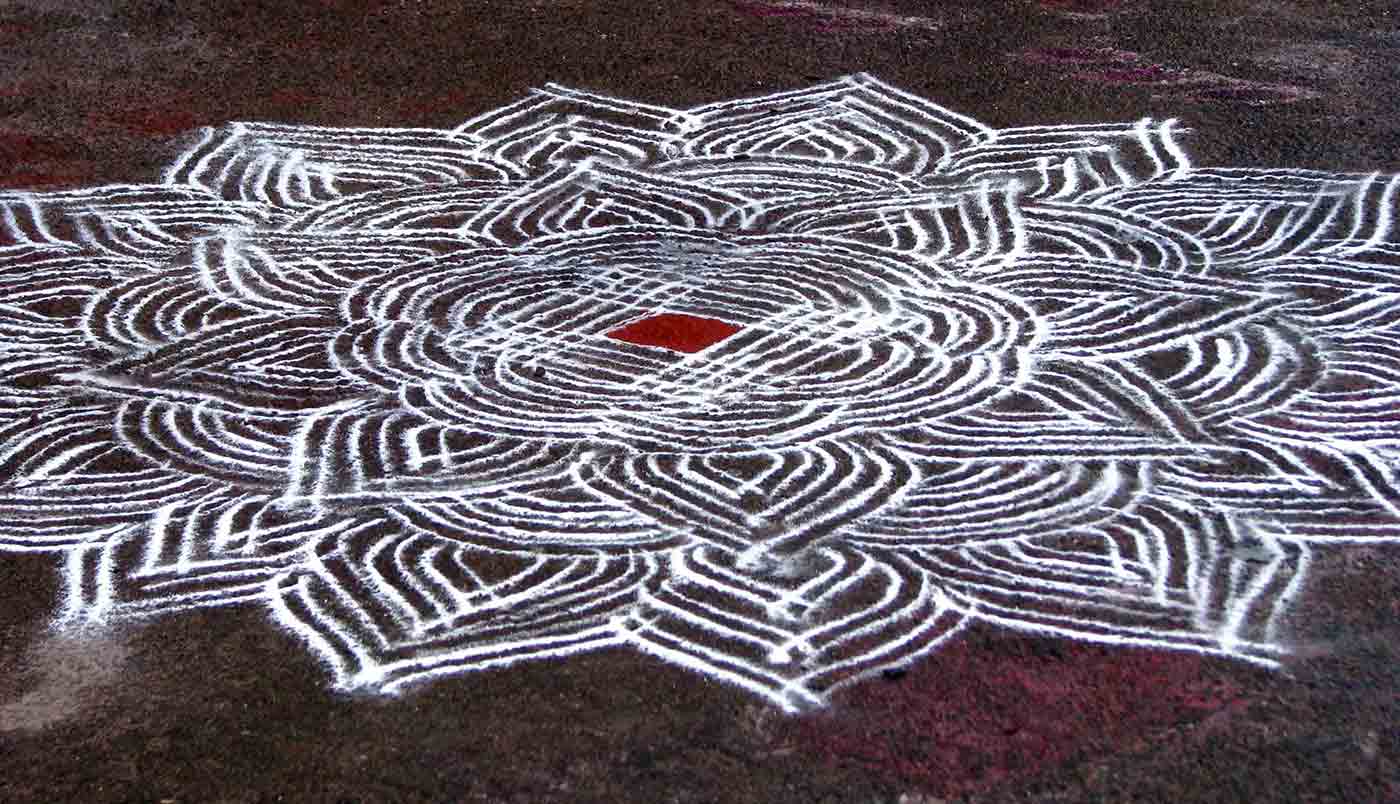7 design lessons from designing a design conference
From content to user research to minute details, here's what's going into the O'Reilly Design Conference.
 An intricate kolam chalk drawing the Kapaleeshwarar Temple in Mylapore, Chennai. (source: By McKay Savage on Wikimedia Commons)
An intricate kolam chalk drawing the Kapaleeshwarar Temple in Mylapore, Chennai. (source: By McKay Savage on Wikimedia Commons)
Editor’s note: This post originally published on Medium; it is republished here with permission.
This January, I am co-chairing the O’Reilly Design Conference with Rochelle King. I’ve learned plenty while designing an experience for designers, and below are a few of the lessons I’ve picked up along the way. If you’re interested in checking out the results of these lessons, come join us January 19-22, 2016, at Fort Mason in San Francisco.
1. Details matter
Lighting, seating, coffee, food, pens—these details matter, and they can add up to a mediocre or delightful experience. If you know your users like high-quality coffee, consider investing in a local service with excellent roasts.
2. Content is important, but it’s only part of the package
Perhaps as a former editor it’s my comfort zone, but the fun part of all of this is creating the arc, the themes, and networking to connect with the most interesting designers and leaders to bring them into the program. The mix of ingredients: topics, approaches, organizations, gender, and race all factored into the program.
3. Choose carefully
There are more ideas than can realistically be managed. Select the ideas you want to invest in, and quickly put those you can’t to the side. There will always be more ideas than time—or money—allows. Select those that you think will make an impact on attendees. And choose your co-chair carefully. I hit the jackpot with mine. We respect each other and complement each other, but most of all, we share the same work ethic and are passionate about what we’re doing. Choose your battles: what can you live with? Tradeoffs are key.
4. Know your user: You are not the user
This isn’t a conference for me or most of my colleagues. I have a fine group of designers to consult with as we work to craft the experience. This isn’t about me or what I like. If you don’t know what your users want or need, well on to #5.
5. User research matters: Question assumptions
It all comes down to one thing: do your homework. I’ve spent several years attending design events, watching designers, talking to designers, and interviewing designers for our Design Podcast series. I jokingly note that I get paid to talk to smart people all day. My goal in all of this is to host a conference that adds to the larger conversation and provides skills to designers—skills that can be applied immediately after attending the conference. With every piece of the event, from the content in the program to the choice of pens to seating, I asked designers what they’d prefer. Never assume you know, and if you think you know, ask anyway. What would your user want? User research is an iterative process.
6. Focus on the user journey: Experience design is at the heart
Attendee, speaker, exhibitor—you are our clients, and we work for you. Mapping out the journey of each is critical. What are the touchpoints? For all three groups, the experience begins long before the event, and viewing the experience from the shoes of each is an important step toward creating a comfortable, successful, happy experience. For speakers, I want them know their contributions matter a great deal to us, so I spent a weekend writing personal notes to each. For attendees, our communications prior to the event, including email and a dedicated Slack channel, are important for connecting and building community. Touchpoint considerations within the event include the entrance to the space, creating space for serendipitous interactions, and scheduling downtime for connections and conversations to happen. The larger experience is a collection of touchpoints, not simply the content or one moment in time.
7. It’s a team effort
No one person can develop and produce a conference, just as no onedesigner can develop and produce a product—designers rely on other designers, programmers, and engineers. It takes a village to craft a conference. To build something new requires smart people tirelessly working together to build something and then build awareness about that something.
There is plenty more I am learning, and I’ll be back to share my 20/20 hindsights after the event. Isn’t that the point though—learning and applying and working toward improving? I hope to see you in San Francisco in January.
